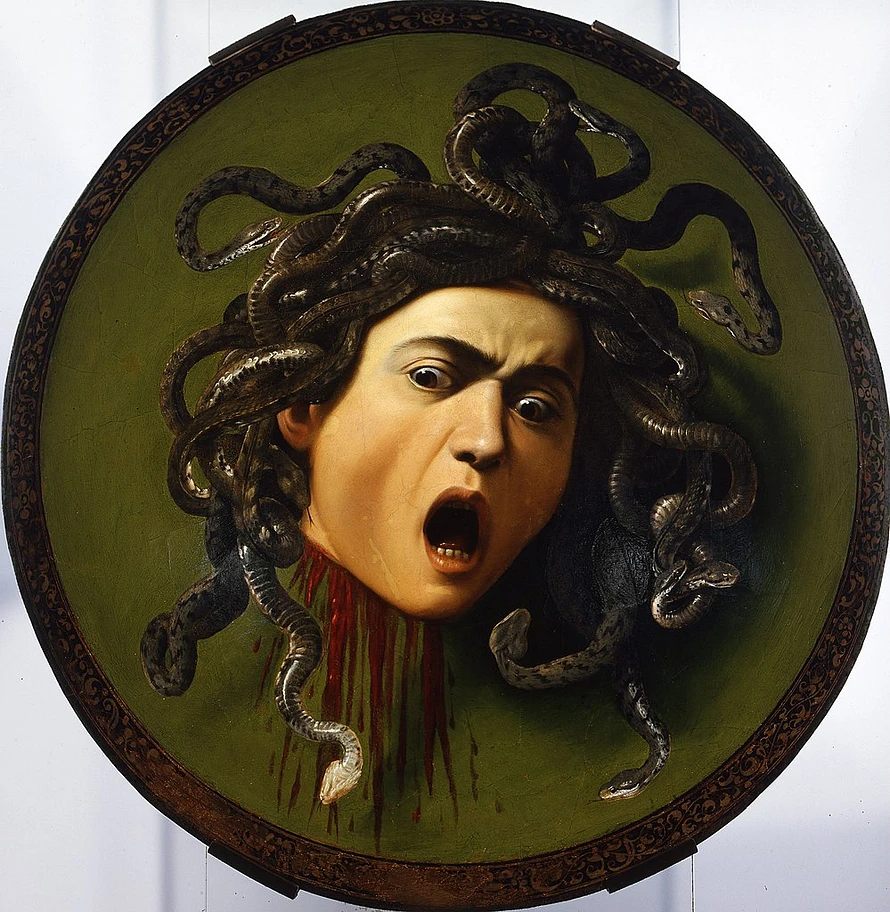Medusa and Caravaggio: The Intersection of Myth, Art, and Emotion
Few figures from Greek mythology have left as lasting an impression as Medusa. Often remembered as a terrifying monster with snakes for hair and a gaze that turned people to stone, Medusa’s story is far more complex—and far more tragic. Her image has been reinterpreted throughout history, none more dramatically than in Caravaggio’s 1597 painting "Medusa".
Who Was Medusa?
In ancient mythology, Medusa was one of the three Gorgons, but unlike her sisters, she was originally mortal. According to the most common version of the myth, Medusa was a beautiful maiden who caught the attention of Poseidon. After an encounter in Athena’s temple—interpreted by some as assault—Athena punished Medusa by turning her hair into serpents and making her face so horrifying that one glance would turn onlookers to stone.
This transformation turned Medusa from a victim into a symbol of danger and power. Eventually, the hero Perseus was sent to slay her, aided by gifts from the gods, including a mirrored shield, which allowed him to avoid her deadly gaze.
Caravaggio’s "Medusa" (1597)
Michelangelo Merisi da Caravaggio, known for his intense realism and dramatic use of light and shadow (chiaroscuro), painted "Medusa" on a ceremonial wooden shield. Commissioned as a gift for the Grand Duke of Tuscany, the painting depicts the exact moment of Medusa’s decapitation.
But Caravaggio did more than illustrate a myth. He humanized her. Medusa’s mouth is open in a silent scream, her eyes wide with shock and pain. Blood pours from her neck, yet her expression shows more than horror—it shows fear, perhaps even betrayal. The use of his own face as a reference for Medusa’s expression adds another layer of emotional depth.
Art Meets Myth
Caravaggio’s Medusa challenges viewers to see beyond the monstrous. It captures a moment of intense transition—not just the death of a creature, but the end of a human life cursed by divine injustice. The use of a convex shield as a canvas mirrors the myth itself, as Perseus used his shield to see and slay her without being turned to stone.
The painting also reflects Renaissance and Baroque attitudes toward myth, power, and the human form. It blurs the line between horror and beauty, inviting us to question: Was Medusa ever a monster, or was she made into one?
Legacy and Symbolism
Today, Medusa remains a potent symbol. She appears in fashion, feminism, pop culture, and political discourse. Some see her as a symbol of feminine rage and retribution; others as a cautionary tale about power and punishment.
Caravaggio’s Medusa continues to captivate audiences, not only because of its striking technique, but because it dares to present a monster as a victim—reminding us that even myths are shaped by perspective.
Sources & Further Reading:
-
Greek Mythology: Theogony by Hesiod
-
Caravaggio: A Life Sacred and Profane by Andrew Graham-Dixon
-
Uffizi Gallery, Florence (Home of the Medusa painting)
Have thoughts on Medusa’s story or Caravaggio’s version of her? Share them in the comments below or connect with us on social media.
Get your Medusa Phone Case here

